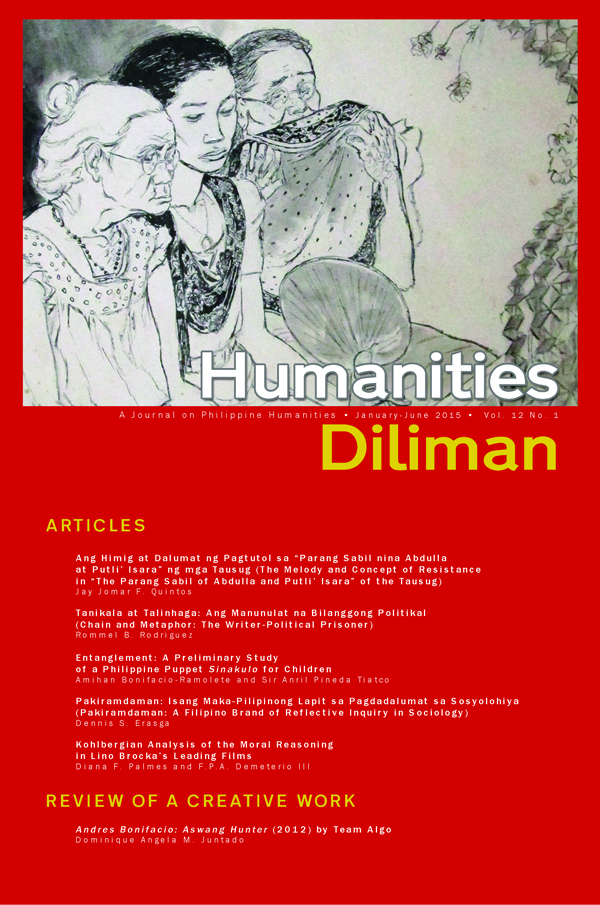Entanglement: A Preliminary Study of a Philippine Puppet <em>Sinakulo</em> for Children
Abstract
Staged annually at the Amelia Lapeña-Bonifacio Papet Teatro-Museo, Papet Pasyon is the only sinakulo in the Philippines performed in puppetry to date. In this essay, the puppet play is proposed to be an entanglement of three cultural forms: the literary form of the pasyon, the theatre form of the sinakulo, and the art of puppetry. The bases for the text of this puppet play are foreign sources namely a children’s Bible from Europe, the passion play from Oberammergau in Germany, and the dramatic tradition of the Western musical. Though originally a Western-based text, Lapeña-Bonifacio crafted and encapsulated the puppet play into an hour and a half show that highlights the story of Christ’s passion, is written in a Philippine language, and is understandable to young audiences. Its manner of presentation, on the other hand, was inspired by the very rich puppet traditions of Asia, particularly the Japanese bunraku and the Indonesian wayang golek. The essay begins exploring this proposal of entanglement by introducing Amelia Lapeña-Bonifacio, founder of Teatrong Mulat, and her vision of a children’s theatre in the archipelago with productions based on and inspired by local folktales and various theatrical forms in the Asian region. This is then followed by a narrative on the genesis of Papet Pasyon, which like most Teatrong Mulat productions, is a product of mixing and matching local and foreign influences. The bulk of the paper is a preliminary analysis and a close reading of Papet Pasyon as a cultural text and performance of entanglement because, generally, the play is a concatenation of the pasyon, the sinakulo, and various forms of puppetry.
Keywords: Puppetry, passion play, children’s play, religious drama, Asian theatre, Philippine puppetry


